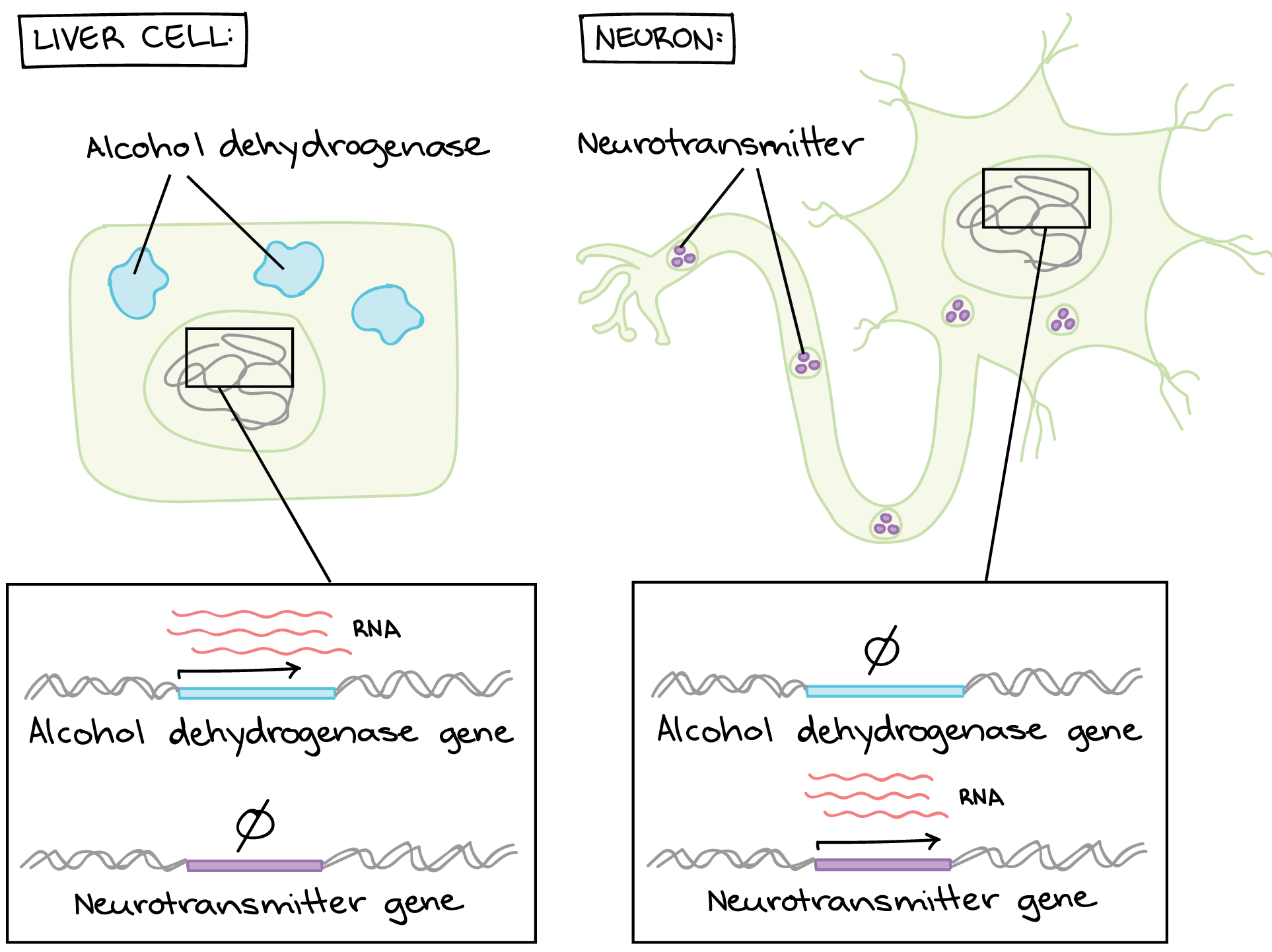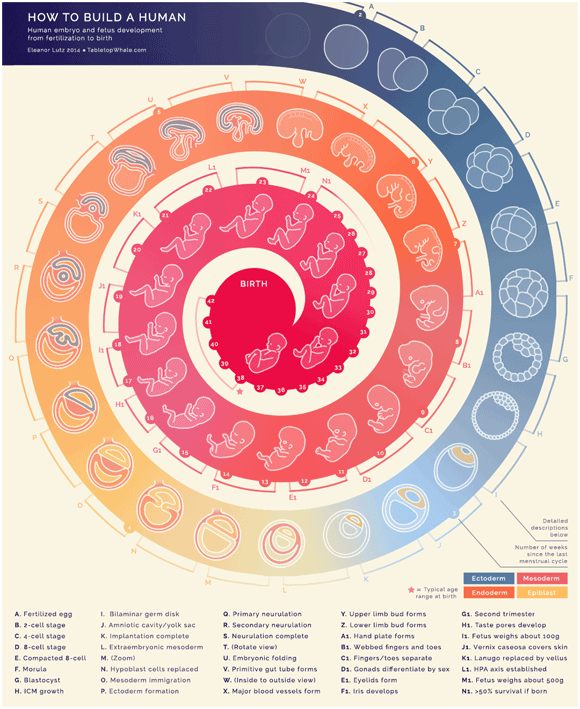C8a: Cell Specialization - Why Cells Have Different Jobs
Introduction: From One Cell to Many Specialized Roles
Imagine a single fertilized egg (a zygote). This one cell contains all the genetic information needed to build an entire complex organism, like a human being, composed of trillions of cells. But how does that one initial cell give rise to brain cells, muscle cells, skin cells, and all the other diverse cell types that perform specific functions? The answer lies in cell specialization, also known as cell differentiation.
Cell specialization is the process by which generic, less specialized cells become more distinct in their structure and function. It’s like having a team where everyone starts with the same basic training, but then individuals specialize to become experts in specific tasks – one becomes an engineer, another a doctor, another an artist. In multicellular organisms, this specialization allows for a division of labor, making the organism more efficient and capable of complex life processes.
 Figure 1: A simplified view of how a single stem cell can give rise to various specialized cell types. (Source: Wikimedia Commons)
Figure 1: A simplified view of how a single stem cell can give rise to various specialized cell types. (Source: Wikimedia Commons)
In this pre-lab reading, you will learn about:
- Why cell specialization is essential for multicellular life.
- The basic mechanism behind cell specialization: differential gene expression.
- The role of stem cells.
- Examples of specialized cells and their unique features.
Why Do Cells Need to Specialize?
In single-celled organisms like bacteria or yeast, one cell performs all life functions. However, as organisms become larger and more complex (multicellular), relying on every cell to do everything becomes inefficient. Specialization offers several advantages:
- Efficiency: Specialized cells can perform their specific tasks much more effectively than generalized cells. Muscle cells are optimized for contraction, nerve cells for transmitting signals, and red blood cells for carrying oxygen.
- Complexity: Specialization allows for the development of complex tissues, organs, and organ systems (like the nervous system, digestive system, circulatory system). This complexity enables higher-level functions.
- Organization: Cells group together to form tissues (e.g., muscle tissue, nervous tissue), which combine to form organs (e.g., heart, brain), which work together in organ systems. This organization relies on the specific functions of specialized cells.
The How: Differential Gene Expression
If almost all cells in an organism contain the same complete set of genes (the genome), how do they become so different? The key is differential gene expression.
Think of the genome as a giant cookbook containing thousands of recipes (genes). While every cell has the entire cookbook, specialized cells choose to use only specific recipes relevant to their function.
- A muscle cell will “turn on” (express) genes for contractile proteins like actin and myosin.
- A neuron (nerve cell) will express genes for neurotransmitters and ion channels needed for signal transmission.
- A pancreatic cell might express the gene for insulin.
Genes that are not needed for a cell’s specific function are “turned off” (not expressed) or expressed at very low levels. This selective activation and inactivation of genes determine the specific set of proteins a cell makes, which in turn dictates its structure, function, and overall identity.
 Figure: Gene expression
Figure: Gene expression
 Figure 2: Schematic showing that while different cell types (like a neuron and a liver cell) contain the same DNA, they express different sets of genes, leading to different proteins and functions. (Source: Khan Academy)
Figure 2: Schematic showing that while different cell types (like a neuron and a liver cell) contain the same DNA, they express different sets of genes, leading to different proteins and functions. (Source: Khan Academy)
Stem Cells: The Unspecialized Precursors
Where do specialized cells come from? They arise from stem cells, which are relatively unspecialized cells that can divide to produce more stem cells and can also differentiate into specialized cell types.
- Totipotent: Can differentiate into any cell type, including the extraembryonic tissues (like the placenta). The zygote and the first few cells after fertilization are totipotent.
- Pluripotent: Can differentiate into any cell type of the embryo itself (all three germ layers: ectoderm, mesoderm, endoderm), but not the extraembryonic tissues. Embryonic stem cells (ESCs) are pluripotent.
- Multipotent: Can differentiate into a limited range of cell types, usually within a specific tissue or organ lineage. Adult stem cells (e.g., hematopoietic stem cells that form blood cells, mesenchymal stem cells that form bone, cartilage, fat) are typically multipotent.
Stem cells are crucial for development, growth, and repairing damaged tissues throughout life.
Examples of Specialized Cells
Let’s look at a few examples of specialized cells and how their structure relates to their function:
-
Neurons (Nerve Cells):
- Function: Transmit electrical and chemical signals for communication within the nervous system.
- Structure: Have long extensions called axons and dendrites to send and receive signals over potentially long distances. Contain specialized proteins for generating electrical potentials and releasing neurotransmitters.
-
Muscle Cells (Myocytes):
- Function: Contract to produce movement.
- Structure: Elongated cells packed with contractile proteins (actin and myosin) arranged in specific patterns (sarcomeres in skeletal and cardiac muscle). Rich in mitochondria to provide energy for contraction.
-
Red Blood Cells (Erythrocytes):
- Function: Transport oxygen from the lungs to the tissues.
- Structure: In mammals, mature red blood cells are biconcave discs that lack a nucleus and most organelles. This maximizes space for hemoglobin (the oxygen-carrying protein) and allows the cell to deform easily to squeeze through narrow capillaries.
-
Epithelial Cells:
- Function: Form linings and coverings for body surfaces, cavities, and glands. Involved in protection, secretion, absorption, and sensation.
- Structure: Tightly packed together to form continuous sheets. Shape varies depending on function (e.g., thin and flat for diffusion, cuboidal or columnar for secretion/absorption). Often have specialized junctions to connect cells and control passage of substances.
 Figure: Specialized Cells
Figure: Specialized Cells
Connecting to the Lab: Observing Specialization
In the upcoming lab session (C8a), you will likely be observing prepared microscope slides of various animal tissues. This exercise aims to help you:
- Identify different types of specialized cells based on their morphology (shape and structure).
- Relate the observed structure of these cells to their specific functions within the tissue and the organism.
- Appreciate the diversity of cell forms that arise from the process of cell specialization.
Pay close attention to the differences in cell size, shape, organization, and any visible internal structures (like nuclei, granules, striations) as you examine tissues like muscle, nerve, blood, or epithelium.
Video Resource: Cell Differentiation
Watch this video for a visual explanation of cell differentiation and its importance:
Watch this video for a visual explanation of Your Life Before Birth:

Conclusion
Cell specialization is a fundamental biological process that allows for the development and functioning of complex multicellular organisms. It is driven primarily by differential gene expression, where cells selectively use parts of their genome to produce specific proteins, leading to specialized structures and functions. From the unspecialized potential of stem cells arises the incredible diversity of cell types – like neurons, muscle cells, and blood cells – each playing a vital role in the organism’s life. Understanding cell specialization is key to appreciating the intricate organization of life.
- Resources
- API
- Sponsorships
- Open Source
- Company
- xOperon.com
- Our team
- Careers
- 2025 xOperon.com
- Privacy Policy
- Terms of Use
- Report Issues